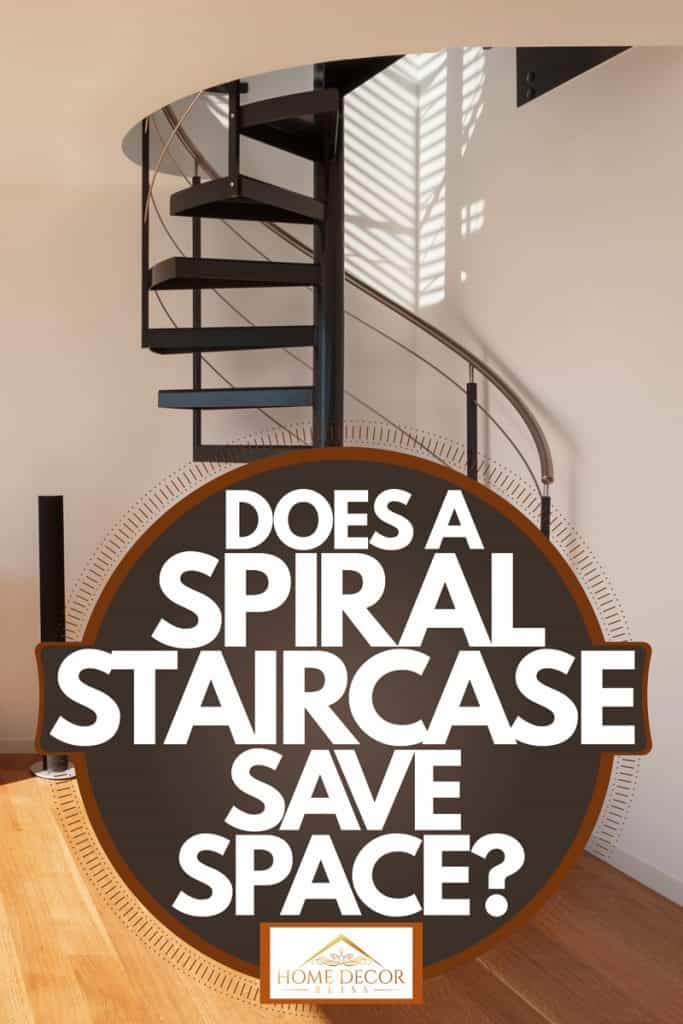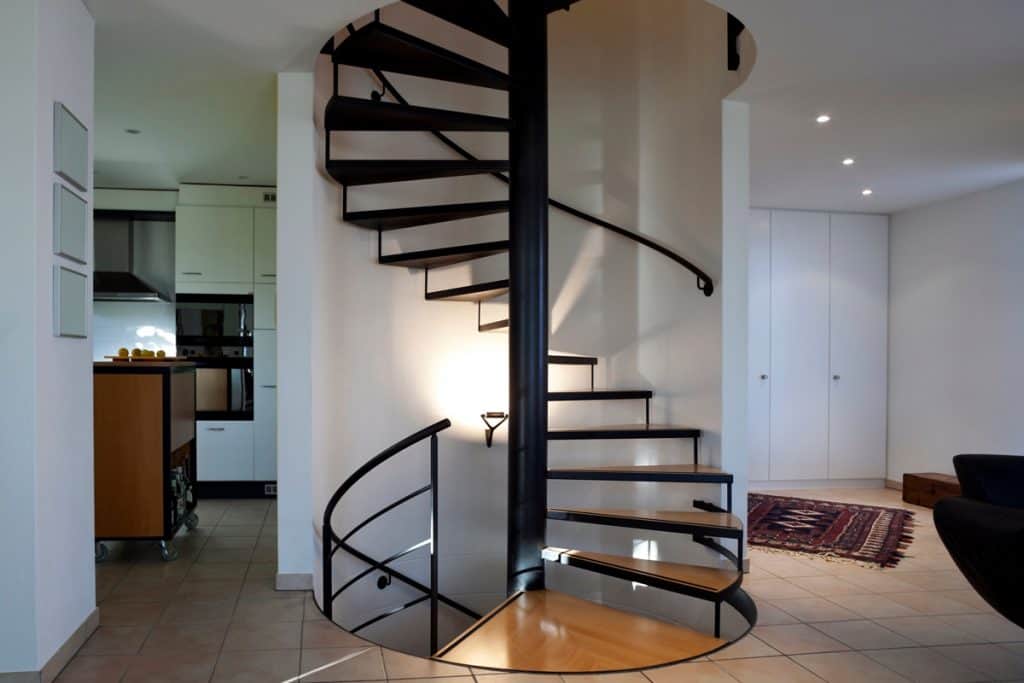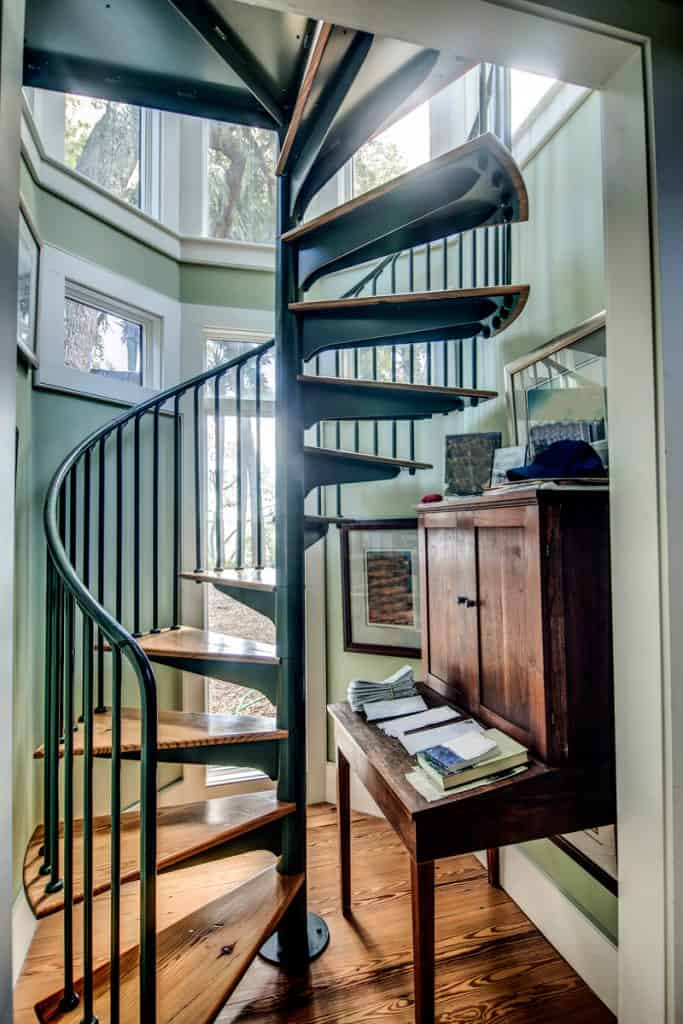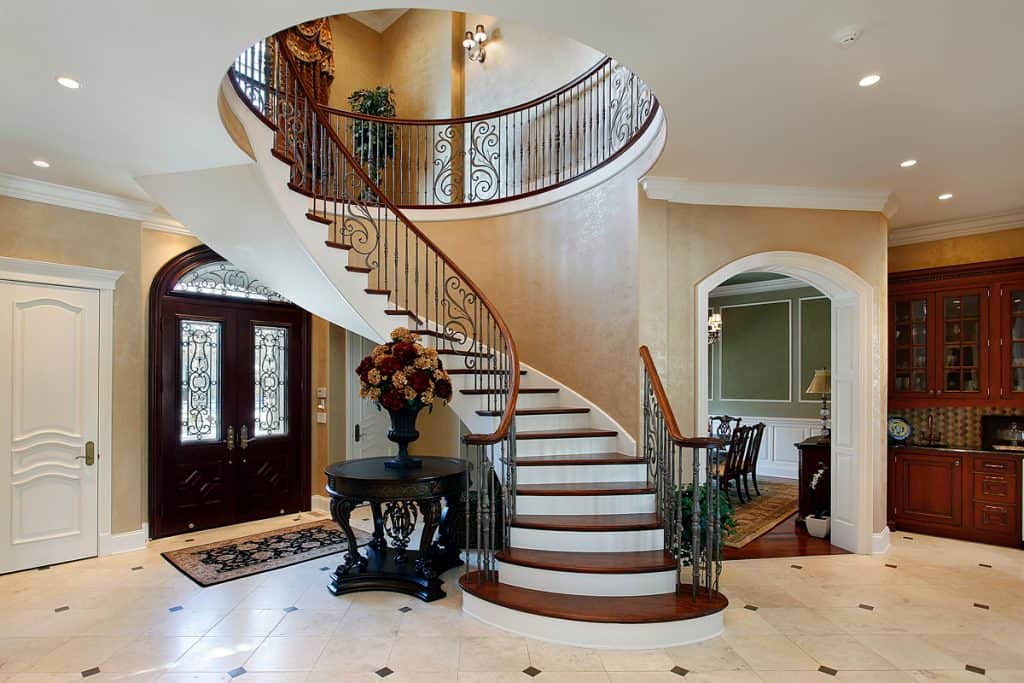If you need stairs, you might be wondering if a spiral staircase might save you some space. All types of stairs will require some space, considering the openings' sizes (both bottom and top-level landings), head clearances, and building codes to consider for staircase size. So you might be wondering if a spiral staircase can minimize the overall floor area needed. We've researched spiral staircase dimensions to find the answer for you.
A spiral staircase will save you space, with a typical 44” by 44” footprint that allows for the stairs themselves, the railing, and additional space for a hand holding the railing. By comparison, a traditional staircase requires an 88” by 36” footprint on the bottom level and a 48” x 36” footprint on the top level. Although some traditional staircases provide a storage area, a spiral staircase will save at least a 7-square foot area.
The following will give you some more information about spiral staircases' footprint to help you decide if this is the best option for your home. Please keep reading, as we will also discuss...

How Much Space Can Be Saved Using A Spiral Staircase?
The difference in overall saved space is definitive. Let's compare the spiral staircase's 44" by 44" total footprint with a traditional staircase. By most states' building codes, at least 6’6” head clearance is required above each stair on a traditional staircase, plus a depth of at least 11” per stair. The rise of each stair is between 4” and 7”. So, for a typical 14' (floor-to-ceiling height) space, that means eight stairs. Traditional staircases amount to losing 7’4” on the bottom floor and around 4’ on the top floor.
How Big Of An Opening Do I Need For A Spiral Staircase?

We may include affiliate links and curated AI content to highlight top design styles.
The overall footprint of 44" by 44" accounts for the top of the stairs' opening, referred to as the well opening. Rather than a traditional landing area, a spiral staircase requires a well opening of at least two inches wider than the stairs' diameter. This allows for the stairway, railing, and occupant to fit through the opening. Depending on what you prefer for style and available space, the well opening can be either square-shaped or circular.
Pros of a Spiral Staircase
Spiral staircases can be made of any material and be as simple or ornate as you want them to be. They can be made of fiberglass, wood, metal, or a mixture of these. Depending on your choice of material, spiral staircases are quite durable and require minimal maintenance. The diverse choice of materials makes them quite versatile for interior or exterior use, and able to coordinate with any decor.
We've thoroughly discussed the smallest diameter spiral staircases for an ultimate space saver. But, you can utilize spiral stairs ranging from 50" by 50" upwards by six-inch increments to 74" by 74" (overall diameters include the well opening). This means that even if you are trying to save space, you can find a spiral staircase that is comfortable for your intended use.
Cons of a Spiral Staircase
The fact that a spiral staircase has a small footprint can also have downsides. Larger people will have a harder time fitting on these stairs. Also, only one person can fit on a spiral staircase, so if they are to be used in a high traffic area, it might cause a traffic jam.
It might be a challenge carrying packages up or down spiral stairs, and moving furniture might require alternative routes. Some items, especially mattresses that can bend, will be able to be transported. It will take more time and effort compared with a conventional staircase. Other items will have to be taken apart and rebuilt.
Please also read "How Big is a Spiral Staircase?" for an in-depth look at sizing spiral stairs for your home.
Are Spiral Staircases Dangerous?
Spiral staircases are generally very safe. There is always a railing and a central pole, so there is something to hold on to. While the stair depth is narrower in the middle and gradually widens toward the outside, the stairs themselves are identical.
However, while they are safe, they are also somewhat unnerving and can be disorienting for some people. Between the higher than normal rise, the curvature, and the open space, people might feel they are not as secure as on a typical staircase. Spiral staircases might not be comfortable for older people, young children, or pets.
Which Way Do Spiral Staircases Go?

Since most people are right-handed and use this hand for support, most spiral staircases will curve counterclockwise when going down the stairs. That way, a person will hold on to the railing on the way down, utilizing the broader part of the stairs, and hold on to the center pole on the way up, climbing the shortest way possible.
Please read "Should A Staircase Be Clockwise or Anticlockwise?" for even more insight and a historical look at stairway direction.
What is The Difference Between Helical and Spiral Stairs?

All spiral stairs are helical. Helical stairs simply refer to curved stairs. For example, a grand staircase in a palace or a museum is considered a helical staircase. Helical stairs can also save more space than typical straight stairs depending on design, and some modern architecture capitalizes on that feature.
The best space savers amongst the Helical stairs are the spiral staircases, due to their compact design. The nice thing about spirals is that while they are great space savers, you can still benefit from a curved staircase's aesthetics.
Summary
Spiral staircases are a safe, space-saving way to reach the upper level of your home. There are a few considerations to be made when choosing to go that route, such as the use of the stairs, the desired aesthetics for the home, and the materials used to build these stairs. We hope this guide proved helpful in beginning your search for the right staircase.



